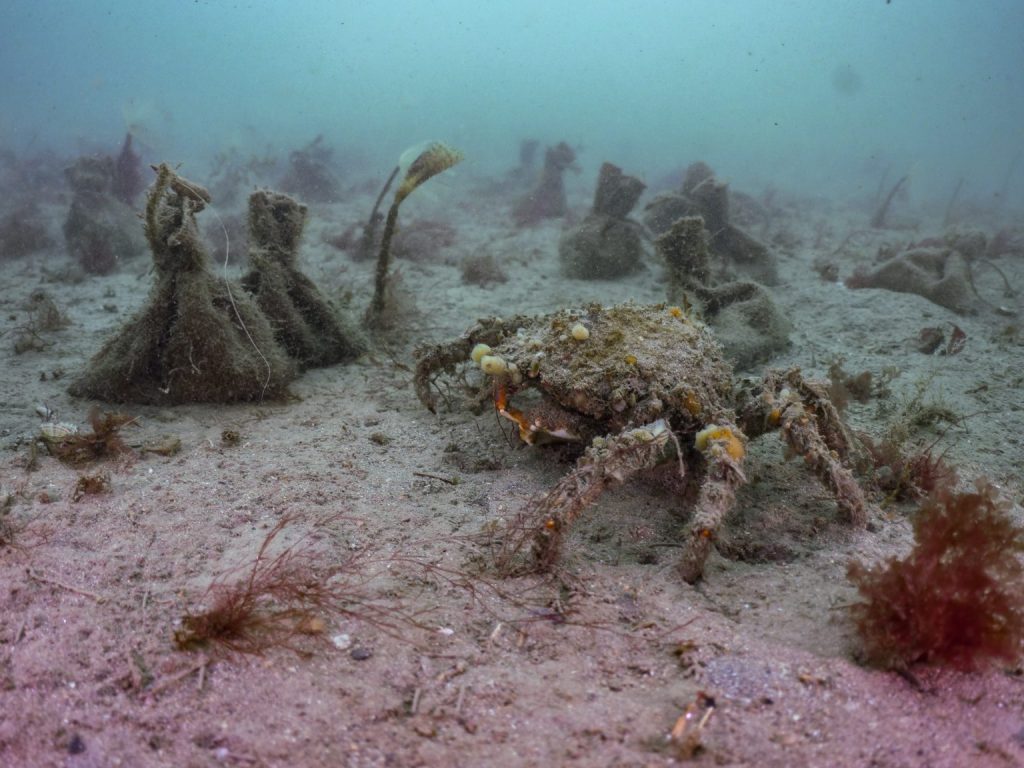Off the southwestern city of Plymouth, seagrass seeds were sown in March on a 2.5-acre (one hectare) patch of seabed owned by the Duchy of Cornwall, the royal estate that belongs to Prince Charles. It is not managed by the Crown Estate. The site was made available free of charge.
.
Things have moved on one year on:
Seagrass in Plymouth Sound – Vision Group for Sidmouth
With announcements out this week, as reported by the Western Morning News:
PLYMOUTH City Council is to receive almost £200,000 in funding for two projects which have been given the green light by the Government environment department Defra and the Environment Agency.
The authority is being awarded a £99,600 grant to map the potential for new surface water drainage to improve water quality and reduce flood risk, and to test a “pay by results” scheme with investors and buyers.
The council is also receiving £95,585 to attract investment in carbon-storing and wildlife-rich seagrass beds, mapping the potential for storing carbon in the beds and developing ways to allow seagrass carbon credits to be sold.
The grants are part of the second round of the “natural environment investment readiness fund” from the Environment Department (Defra) and Environment Agency.
Here’s the government announcement about the first project:
Exploring the potential for new natural surface water drainage schemes in Plymouth to unlock development by reducing flood risk, improving water management and climate resilience, aiming to attract investment from beneficiaries such as water companies and developers.
50 projects receive up to £100,000 to boost investment in nature – GOV.UK
And the second:
England’s largest ever seagrass restoration project has reached a new milestone by planting around 70,000 seed bags spanning 3.5 hectares of seabed, which will provide vital habitat for marine life.
The £2.5 million LIFE Recreation ReMEDIES partnership to ‘Save Our Seabed’ led by Natural England and funded by the EU LIFE Programme, was launched in July 2019. It is seeking to protect and restore sensitive seabed habitats which are at risk.
England’s largest ever seagrass planting hits new milestone – GOV.UK

And there’s a lot of interest in this:
“Seagrass meadows are one of the most valuable and biodiverse habitats on the planet,” says Mark Parry, development officer at the Ocean Conservation Trust. “By restoring seagrass, we are ensuring they will continue to provide vital environmental benefits to both people and the planet.”
UK’s largest ever seagrass project targets the Solent and Plymouth waters – Marine Industry News
Seagrass planting in Plymouth hits new milestone | News | Plymouth Yacht Haven
In parallel, and to mark yesterday’s World Ocean Day, another project was announced – involving Plymouth University:
A landmark project named Blue Meadows that promises to deliver a holistic approach to seagrass protection, regeneration and restoration in the UK has been launched on World Ocean’s Day by the Ocean Conservation Trust.
Seagrasses are up to 35 times more efficient at absorbing carbon than rainforests and despite only covering 0.2 percent of the seafloor, store 10 percent of the oceans’ carbon. They also provide a nursery for many commercialy important fish species.
“We need the important work of restoration to be supported by protection and that’s why we will work together with Harbour Authorities, businesses and our scientific partners at Imperial, Keele and Plymouth universities to fast track protection, whilst developing scalable, cost effective techniques for restoring what we have already lost.”
Seagrass protection and restoration project launched | The Fish Site
Finally, if controversially, from the latest National Geographic magazine:
Queen Elizabeth is well known as one of the largest landowners in the world. Less well known is that her holdings include most of the seabed encircling the United Kingdom, out to 12 nautical miles from shore. That eye-popping detail of monarchal history is being seen in a new light as Britain’s declining biodiversity gains attention and the royal family has been urged to take on greater leadership in restoring nature—starting with the properties they control.
Yet lately efforts to restore coastal waters have encountered obstacles unique to this monarchy—ones that have chased a kelp farmer to a more welcoming reception in southeast Asia, for example, and that threaten to derail the largest effort to replant seagrass ever undertaken in Britain…
Richard Unsworth, a marine ecology professor at Swansea University in Wales, whose Project Seagrass in one of the U.K.’s most prominent marine restoration efforts, is incredulous that the Crown Estate “would charge us to plant seagrass on their seabed.” …
“The seabed is more than a cash cow for the Crown Estate and the Treasury,” says Luke Pollard, a member of Parliament from the coastal city of Plymouth. “In the middle of a climate and ecological crisis we need the Crown Estate to put nature and carbon on the same level as receipts for offshore activity.” …
Off the southwestern city of Plymouth, seagrass seeds were sown in March on a 2.5-acre (one hectare) patch of seabed owned by the Duchy of Cornwall, the royal estate that belongs to Prince Charles. It is not managed by the Crown Estate. The site was made available free of charge.
Queen Elizabeth owns most of the U.K. seabed. That’s slowing conservation work